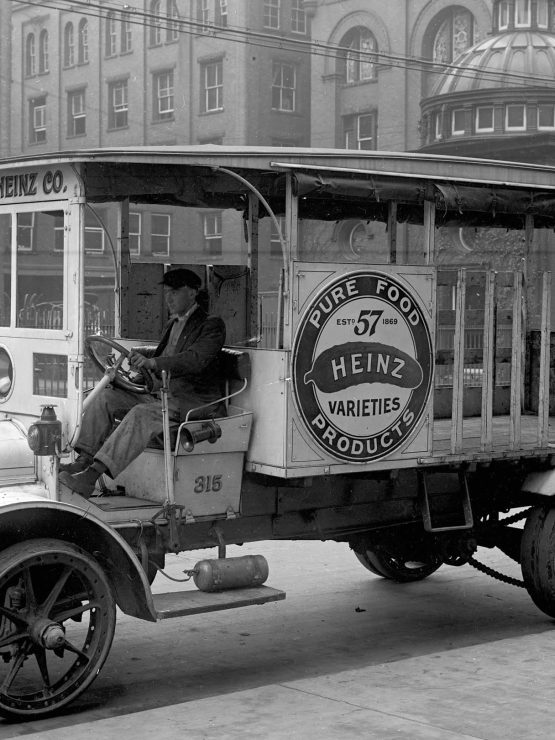
Kennywood Park Records
One of only two amusement parks to be designated as a National Historic Landmark, Kennywood Park donated more than 140 boxes of their corporate archives to the History Center in 2016. The Kennywood Park Records amount to 135 linear feet that includes correspondence, photographs, drawings, publicity material, moving images and financial records, offering a comprehensive view of the history of the amusement park.
The materials shed light on how park management navigated changing cultural, economic, and social conditions brought upon by two world wars, downturns in the nation’s economy, technological upheavals, changing customer taste, and competition from modern theme parks. Internal records of an amusement park, like the Kennywood Park Records, have the potential to reveal the strategies, planning, and decision-making of the individuals behind one of the most powerful and under-researched cultural influencers of the 20th century. We believe the Kennywood Park Records are the largest collection of internal archives from an amusement park in the country.
The processing and partial digitization of the Kennywood Park Records have been made possible in part by a grant from the National Endowment for the Humanities.
About Kennywood Park
Kennywood Park is an amusement park established in 1898 in West Mifflin, Pennsylvania, ten miles outside of Pittsburgh. A National Historic Landmark, the park was built on land known as Kenny’s Grove, which had been a picnic spot since the 1860s. Kennywood opened to the public in 1899 with features that included a carousel, dance pavilion, and casino (the park’s restaurant). The following year, the park added a bandstand and an athletic field.
In 1902, the Monongahela Street Railway Company hired Pittsburgh resident Frederick Ingersoll to build the Figure Eight Toboggan, one of the country’s first figure-eight roller coasters. That same year, the Monongahela Street Railway Company merged with several other trolley lines to form the Pittsburgh Railways Company (PRC). The PRC turned the management of Kennywood Park over to the Pittsburgh and Steeplechase Amusement Company, but the company folded in 1905. The PRC returned as the park’s operator for the next two years. In late 1906, they turned the park’s management over to Andrew S. McSwigan, Fred W. Henninger, and A. F. Meghan, who formed a partnership known as Pittsburgh Kennywood Park Company, Limited.
This management company embraced new technology and pursued strategies to increase interest in the park with new rides and amusements. In 1904, Kennywood Park also began showing motion pictures, a practice that continued through the 1930s. In 1910, the park hired Ingersoll to build the first Racer rollercoaster. It was the largest twin-track coaster in the world at the time and cost nearly $50,000 to construct. While the park continued to add new mechanical attractions throughout the decade, Kennywood’s other great draw was dancing. The dance pavilion was open every afternoon and hosted special dances on weekends.
Business fell off during the Depression of the 1930s, forcing the park to reduce staff and advertising, concentrating funds on maintenance and free entertainment designed to draw crowds into the park. Kennywood also needed to increasingly compete with local parks in Western Pennsylvania and Eastern Ohio for the lucrative and predictable picnic business. After World War II, Kennywood’s greatest problems were material shortages and growing competition with other forms of recreation such as movies and television. Kennywood prospered during the early years of television by developing new attractions and inviting television stars into the park as entertainment.
In 1971, the Kennywood Park Company purchased the park’s 140 acres for 1.3 million dollars from the heirs of the Kenny family. The park’s success continued for the next several decades with the addition of more roller coasters, and it soon became known as the “Roller Coaster Capital of the World.” The park expanded locally by purchasing the Idlewild amusement park near Ligonier, Pennsylvania (1983) and constructing the Sandcastle water park in West Homestead, Pennsylvania (1989). In 1995, Kennywood opened the Lost Kennywood section of the park, which is modeled after amusement parks from the early 1900s.
In 2007, Parques Reunidos, based in Spain, purchased Kennywood Entertainment. Palace Entertainment, a subsidiary of Parques Reunidos, became Kennywood’s parent company, but day-to-day park operations continued to be managed by local staff.
Collection Highlights
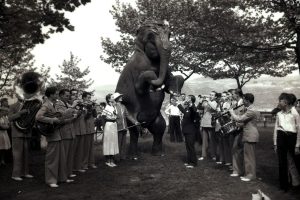
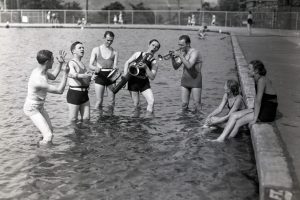
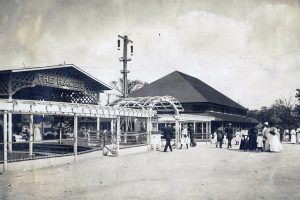
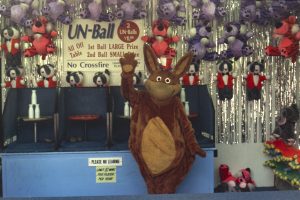
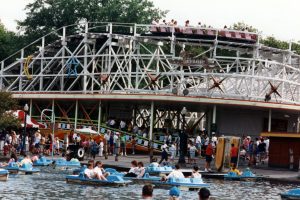
Further Research
Kennywood Park Records Finding Aid
Kennywood Park Online Collection
